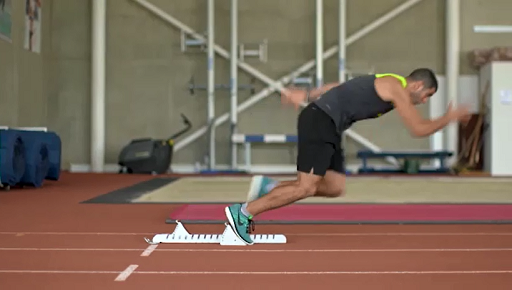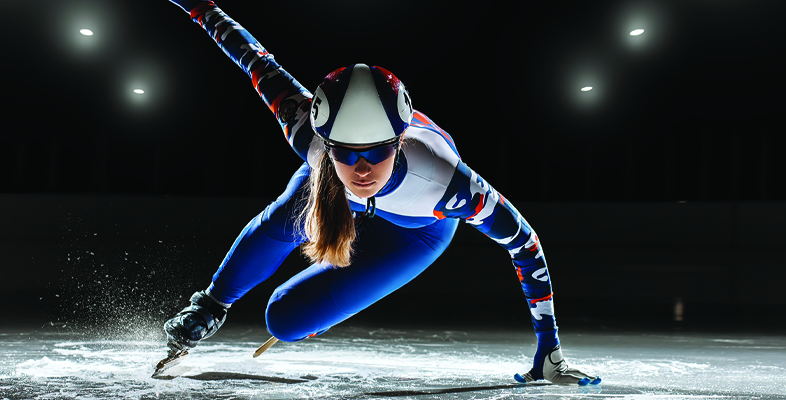2.1 The mechanics of speed
In this section you will investigate the biomechanics of speed in order to buttress your understanding of speed and how to develop it.
Activity 2 Speed mechanics
Watch Video 2 and have a look at the glossary below in Box 1. Once you’ve watched Video 2 and completed the reading, fill in the gaps in the statements below which describe how these terms can be applied to a sprinter at the start of a race.

Transcript: Video 2 The science of sprinting
[MUSIC PLAYING]
Box 1 Glossary of speed terms
- Velocity: How fast an object (or person) is moving and its direction
- Speed: The rate at which an object (or person) covers a distance
- Impulse: The product of the force generated, and the time required to produce the force (force x time)
- Force: The product of mass and acceleration or a push/pull exerted on one object by another
- Acceleration: The rate at which an object’s velocity changes over time
Use the drop-down menus to select the correct missing word.
Having explored the biomechanical principles of speed you will now look at the physiology of speed and how this relates to speed training.
